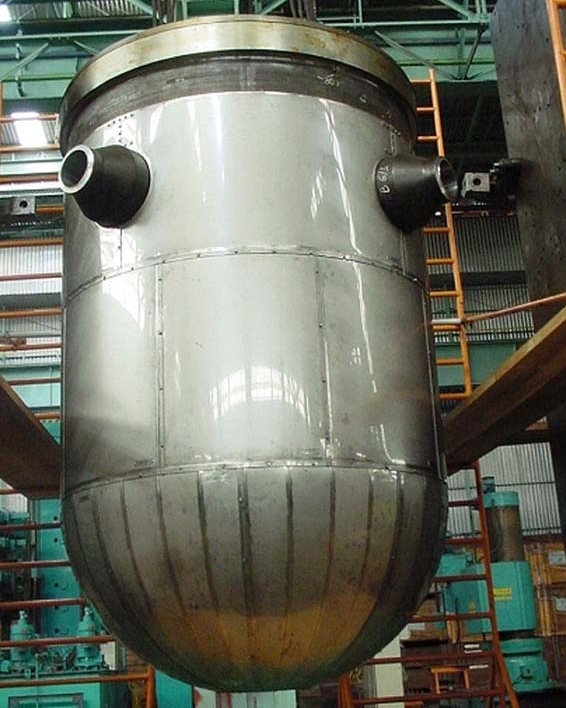

Developed at the University of São Paulo, Brazil, model correlates statistical distribution of microfissures with local plastic strain in structural components (photo: Nuclep)
Developed at the University of São Paulo, Brazil, model correlates statistical distribution of microfissures with local plastic strain in structural components.
Developed at the University of São Paulo, Brazil, model correlates statistical distribution of microfissures with local plastic strain in structural components.

Developed at the University of São Paulo, Brazil, model correlates statistical distribution of microfissures with local plastic strain in structural components (photo: Nuclep)
By José Tadeu Arantes
Agência FAPESP – The pressure vessel that houses the reactor core is the most critical structural component of the pressurized water reactor (PWR) used in the Angra dos Reis nuclear power plants as well as in the Brazilian Navy’s future nuclear submarine.
In a PWR, water is pumped under high pressure to the reactor core, where it moderates and is heated by fission of uranium atoms in the primary coolant loop. The heated water then flows to a secondary system with a steam generator that drives turbines, which in turn generate electricity. The reactor vessel is made of extremely tough ductile steel to withstand the high pressures and temperatures of the water flow in the primary loop.
The report of a new enhanced model for pressure vessel structural integrity assessment received a best-paper award at the American Society of Mechanical Engineers (AMSE) Pressure Vessels and Piping Conference, held in Anaheim, California, in July 2014.
The paper, “A Weibull Stress Approach Incorporating the Coupling Effect of Constraint and Plastic Strain in Cleavage Fracture Toughness Predictions”, by Claudio Ruggieri from the University of São Paulo’s Engineering School (POLI-USP) and Robert H. Dodds from the University of Illinois, resulted from the recently completed research project “Further developments in a micromechanics model for brittle fracture and applications to the master curve methodology”, supported by FAPESP.
“The main factor in pressure vessel degradation is exposure to neutron radiation from the nuclear reaction, which significantly affects the characteristics of the material on the nanometric scale, causing brittleness, flaws and potential fracture,” Ruggieri told Agência FAPESP.
It is worth recalling that the release of nuclear energy for conversion into electricity begins when a neutron collides with an atom of fissile material, typically uranium 235 (U-235).
Destabilized by the extra neutron, the U-235 nucleus splits into two smaller but stable atoms and in the process rapidly emits new neutrons, which in turn collide with other atoms of U-235. The resulting chain reaction releases vast amounts of energy.
To assess the effect of free neutrons on the reactor’s structural components, several small test specimens are encapsulated and placed inside the reactor, where they receive high doses of radiation. The specimens are then submitted to fracture toughness trials.
However, there is a significant difference in scale between the encapsulated specimens, which are about 10 mm thick, and the reactor wall, which is about 200 mm thick. “With our new model, the imprecisions inherent in experimental measurements can be corrected, making the assessment of neutron-induced degradation more accurate and reliable,” Ruggieri said.
The researchers found that the fracture mechanism is a process of degradation occurring on various scales, from the atom all the way up to the entire pressure vessel. They built their model based on this range of scales, correlating the statistical distribution of microfissures with local plastic strain in macroscopic structural components.
“The main aim was to understand the role of plastic strain in the cleavage fracture process by means of a probabilistic fracture parameter and gauge its contribution to the assessment of potential catastrophic pressure vessel failure,” Ruggieri said.
Republish
The Agency FAPESP licenses news via Creative Commons (CC-BY-NC-ND) so that they can be republished free of charge and in a simple way by other digital or printed vehicles. Agência FAPESP must be credited as the source of the content being republished and the name of the reporter (if any) must be attributed. Using the HMTL button below allows compliance with these rules, detailed in Digital Republishing Policy FAPESP.




